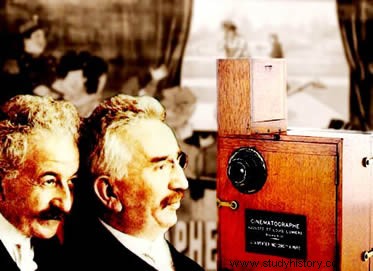
By Rainer Sousa
In the 1880s, several experiments with photographic images indicated the possibility of creating a new art:cinema. In several regions of the world, inventors were already able to develop machines that took pictures in sequence that, when exposed quickly, gave the impression of movement. Among the pioneers of this idea were the headstrong French brothers Louis and Auguste Lumière.
On March 22, 1895, they organized an event on the premises of the French Society in which they projected for a small audience the film “The Workers’ Exit from the Lumière Factory”. Despite being a short sixty-second performance, the brothers' first “film production” was shown in several public meetings, until reaching the general public in December of that same year.
In that first moment, cinematographic technology was limited to recording brief scenes of everyday life. However, soon after, the first plots that would deal with historical and sentimental themes appeared. Without being able to reproduce sound along with the image, the first exhibitions were recognized by the exaggerated gestures of the actors and the use of live instrumental accompaniment.
As we well know, these would be just the first achievements of an industry that would become extremely attractive and profitable. In 1911, a space dedicated exclusively to film production was built in California, United States. In just a few decades, this space known as Hollywood has become known as the most promising representative of studios dedicated to cinematographic art.
However, what would be the fate of the machine that, for the first time, displayed a sequence of images that would give rise to cinema? Inspired by the kinetoscope, the invention of Thomas Edison and William Dickinson, the Lumière brothers made a first experimental model of the cinematograph in 1894. In this first version, the image projection time was only sixteen frames per second.
After some adjustments, they managed to increase the recording time and expanded the light projecting capacity of their cinematograph. In this way, the equipment gained greater functionality and was able to gain an exclusive patent. For that, they carried out the manufacture of other similar models that would prove the authorship of the brothers' invention.
Even today, some of the first cinematographs are very well housed at the Lumière Institute, located in the city of Lyon, France. According to the curator of this priceless historical material, the brothers' cinematograph is in a perfect state of conservation and use. However, those responsible for the material prefer to leave them intact because of their incalculable value.
